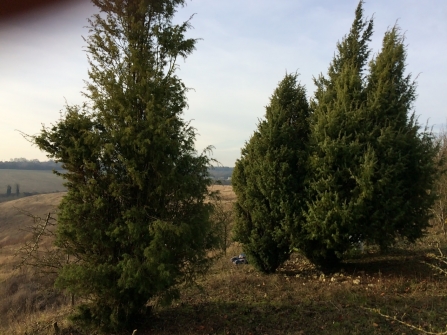Many counties in southern England have lost more than 60% of their juniper population - in Bedfordshire the last remaining population is found at Cemex’s Kensworth Quarry, which is a working quarry and a Site of Special Scientific Interest (SSSI). Juniper is an evergreen shrub or small tree in the cypress family. They are slow-growing, typically they grow about 3-5cm per year and live on average for about 100-120 years, however they can live for longer, for example, the oldest recorded juniper in the UK was aged at 255 years.
This species is dioecious, which means individual plants are either male or female, unlike most tree species, where both male and female flowers occur on the same tree. Male flowers appear as yellow blossoms near the ends of the twigs in spring and release pollen, which is wind-dispersed. Female flowers are in the form of very small clusters of scales, and after pollination by the wind, these grow on to become berry-like cones. Berries are green at first, but ripen after 18 months to a dark, blue-purple colour. Due to the long ripening period, berries occur on juniper throughout the year - it's often possible to see them at different stages of development on the same plant (as above).


